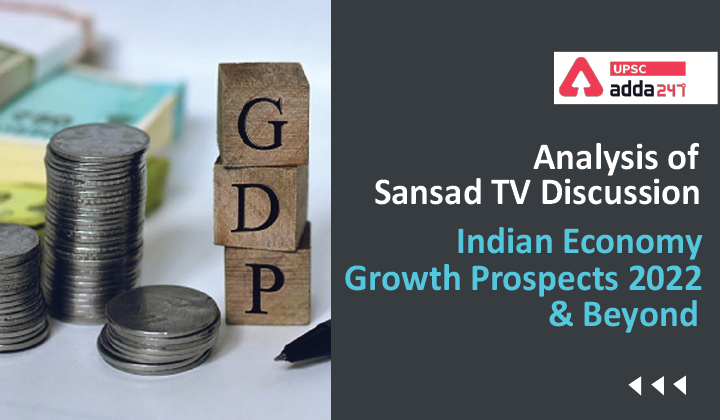Table of Contents
Introduction
- According to the United Nations ‘World Economic Situation and Prospects 2022’ report, the Indian economy is expected to grow 6.5% in the current financial year ending March 2022.
- According to the report, India’s economic recovery is on a “solid path” amid rapid vaccination progress, less stringent social restrictions and still supportive fiscal and monetary stances.
- Further, the GDP is expected to expand by 6.7 per cent in 2022 after a 9% expansion in 2021, as base effects wane.
- At the same time, the report also cautions that while robust export growth and public investments underpin economic activity in the country, high oil prices and coal shortages could put the brakes on economic activity in the near term.
What does India need to be aware of?
- India’s economic recovery is on a solid path, amid rapid vaccination progress, due to less stringent social restrictions and still supportive fiscal and monetary stances.
- While “robust export growth and public investments underpin economic activity”, the WESP warned that high oil prices and coal shortages could put the brakes on economic activity in the near term.
- It will remain crucial to encourage private investment to support inclusive growth beyond the recovery.
- Inflation is expected to decelerate throughout 2022, continuing a trend observed since the second half of 2021 when relatively restrained food prices compensated for higher oil prices.
- A sudden and renewed rise in food inflation, however, due to unpredictable weather, broader supply disruptions and higher agricultural prices, could undermine food security, reduce real incomes and increase hunger across South Asia) region.
What is the Global Economic Outlook for 2022?
- The United Nations forecast lower global economic growth for 2022 and 2023 saying the world is facing new waves of Covid-19 infections, persistent labour market challenges, lingering supply chain issues and rising inflationary pressures.
- After expanding by 5.5 per cent in 2021 — the highest rate of global economic growth in more than four decades — the world economy is projected to grow by only 4 per cent in 2022 and 3.5 per cent in 2023.
- The 46 countries classified as the least developed are estimated to grow by only
- Amid sound macroeconomic policies, Bangladesh has navigated the Covid-19 pandemic relatively well and its “GDP is projected to expand by 6 % in 2022.
- Pakistan’s economy after an economic expansion of 4.5 % in 2021, is projected to grow by 3.9 % in 2022.
- But for Sri Lanka, the WESP projected a GDP growth of 2.6 % for this year.
- Among the developed countries, the UK was projected to be the top performer with a 4.5 % GDP growth this year, after a 6.2 % estimated growth last year.
- The US and China are expected to grow at 3.8% and 5.5% respectively.
What is India’s Economical Outlook by other important institutions?
- The Conference Board, a research group based in New York, says that India’s growth rate could touch 8.5%, an impressive rate amid the ravaging Covid-19.
- The World Bank data, on the other hand, suggests that India’s economy will grow by 8.3 per cent in the fiscal year ending March 2022, unchanged from the June 2021 outlook. The forecast for FY2022/23 and FY2023/24 for India has been upgraded to 8.7 per cent and 6.8 per cent, respectively, reflecting higher investment from the private sector and in infrastructure, and dividends from ongoing reforms, according to its latest Global Economic Prospects report.
Way forward
- In this fragile and uneven period of global recovery, the World Economic Situation and Prospects 2022 calls for better targeted and coordinated policy and financial measures at the national and international levels.
- The time is now to close the inequality gaps within and among countries. If we work in solidarity – as one human family – we can make 2022 a true year of recovery for people and economies alike.
- Without a coordinated and sustained global approach to contain COVID-19 that includes universal access to vaccines, the pandemic will continue to pose the greatest risk to an inclusive and sustainable recovery of the world economy.
Conclusion
While still vulnerable, India is in a better position to navigate financial turbulence due to a stronger external position and
measures to minimize risks to bank balance sheets. However, we should continue to work towards maintaining the growth amid the rising omicron threat.



 TSPSC Group 1 Question Paper 2024, Downl...
TSPSC Group 1 Question Paper 2024, Downl...
 TSPSC Group 1 Answer key 2024 Out, Downl...
TSPSC Group 1 Answer key 2024 Out, Downl...
 UPSC Prelims 2024 Question Paper, Downlo...
UPSC Prelims 2024 Question Paper, Downlo...





